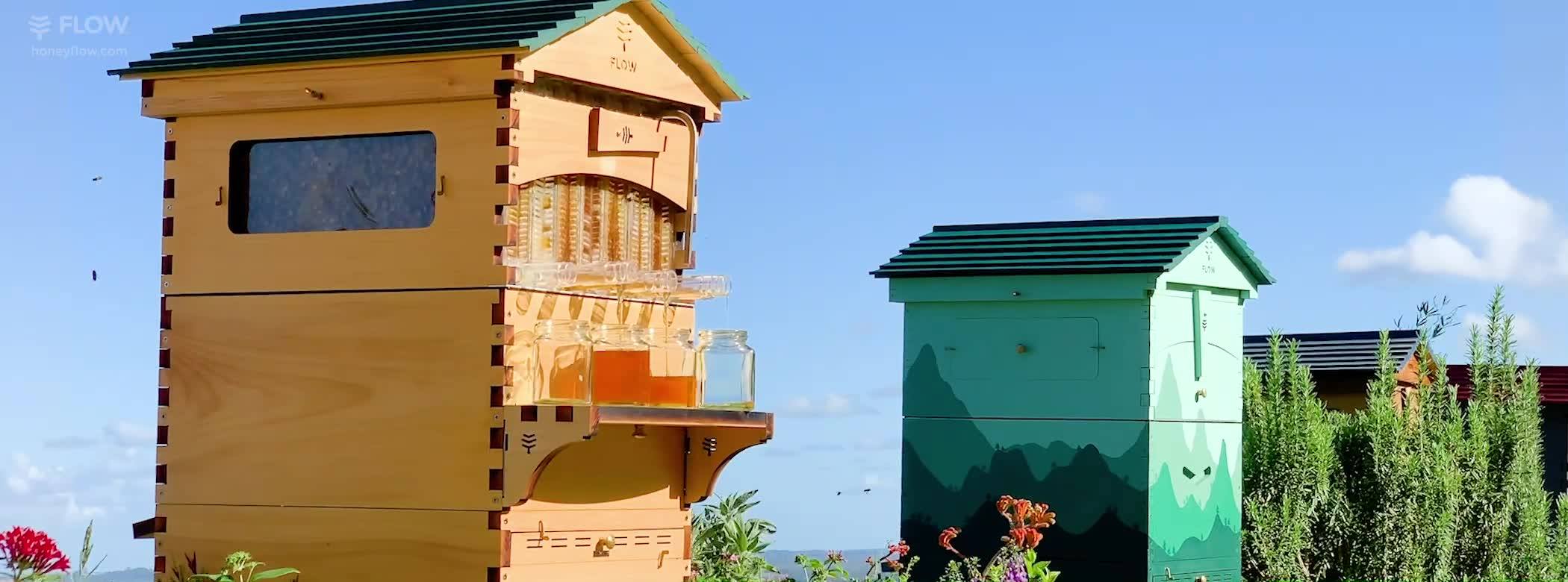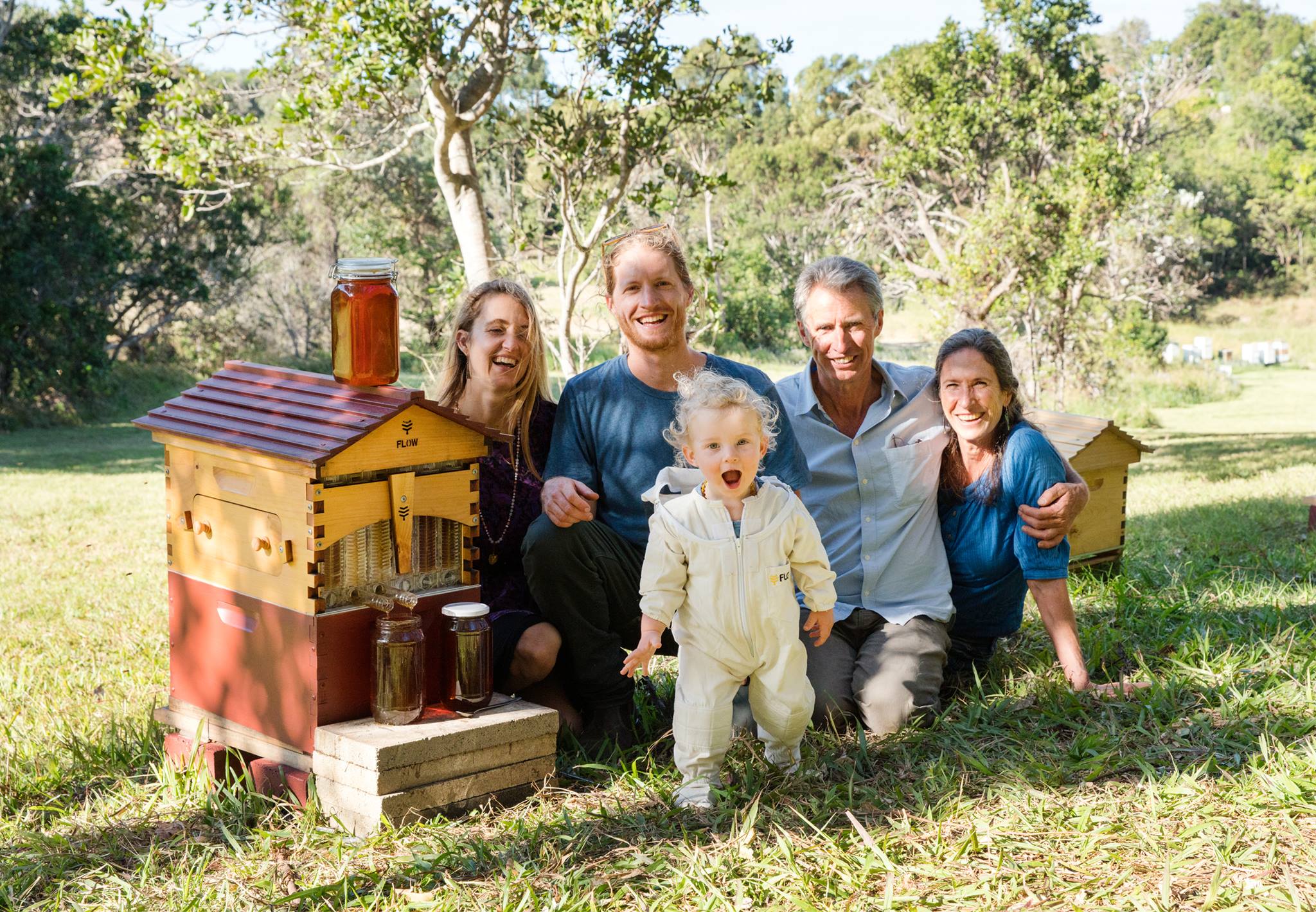Launched with a record-breaking crowdfunding campaign in 2015, Flow took the beekeeping world by storm with a “honey on tap” honey-harvesting system designed to be easier on the bees and the beekeeper.
Invented by father and son, Stuart and Cedar Anderson, Flow technology has become synonymous with Australian ingenuity and innovation. Now being used in more than 130 countries, the brand is a prominent advocate for pollinators and for strengthening humanity’s connection with the natural world.
Flow appeared on this year’s Best for the World list for Environment, and to celebrate co-inventor and CEO Cedar Anderson spoke with us from the apiary.
Watch the conversation here or read the interview below.
Cedar: I think businesses are an amazing change agent. It’s an accelerator. Compared to environmental campaigning in my younger life, you can do a lot fast in the business world. We’ve been nominated for Best for the World in the Environment category, which is amazing and a little bit alarming. We definitely need a lot of action in the space to better what we’re doing in the world.
B Lab: Tell us a little bit about the the Flow Hive itself.
Cedar: In a nutshell, the Flow Hive is an innovative bee hive that my father and I spent a decade developing, where you can turn a handle on the hive and the honey flows straight out. What you have is a hive where you can see into the home and see when the honey frames are full. You can watch the bees do their amazing work producing honey, depositing nectar with their tongues and going through that amazing process of deep dewatering and creating the thing we call honey. At the turn of the handle, you fill up your honey jars. There’s also windows on the side, which give you more windows into this amazing world of bees. You can see all the bees inside the hive – it’s bit of a cold day today, so they’re just chilling out and looking for the next job to do when the sunshine comes out.
B Lab: I want to hear about the origin story and the inspiration for creating this.
Cedar: I was producing honey in the conventional way where you get out the smoker and you take apart the hive, then you take those frames back to a processing shed, which in this case was the shed I was living in. You then cut the wax capping off each frame, you take those frames and put them in a centrifuge, you turn the centrifuge on, and it spins them around at high speed and the honey spins out of those frames. It then goes down to the bottom where we collect it. You then filter out the bee bits and bits of wax and so on. Then you’ve got your honey to sell to the shop. If that’s not enough hard work, you then have to go back to the hives again, put all of those frames back into the hives.
I was there thinking the amount of work you do for the amount of honey you produce is so high, and also the bees were getting quite upset in the process.
I thought there has to be a better way; can’t we just tap honey directly out of the hive into your jar? And a decade later, we had a working system.
We’re doing exactly that, working better than we ever dreamt where you can simply enjoy the process of watching the honey come out into your jar and it doesn’t need any further processing from that.

B Lab: What are some of the steps that you’ve been taking to manage that whole supply chain, from the materials that go into making the Flow Hive to the actual beekeeping suits?
Cedar: We had a bit of a flying start to the business. We put the Flow Hive onto a crowdfunding site, and what happened next was quite extraordinary. We got to $1 million USD worth of sales in the first two hours, and that was a crowdfunding record for the fastest ever crowdfunding campaign. Who would have thought hey, a a bee hive? Eight weeks later, we had $12.2 million USD in pre orders of our hive, which was about 25,000 orders that we had to make and deliver before Christmas.
We didn’t have a manufacturing or supply chain set up. We only had a pre-production model. So we had to hit the ground running at extraordinary speed. During that process, we learned a lot.
For me, it was really important to do what we’re doing only if it was a contribution to the world. We don’t want to just take away.

We realized we needed to set up a wood-sourcing policy, so we got my uncle – a longtime activist who has worked with NGOs all around the world for all his life – to help design us a great wood-sourcing policy. From there, we were producing beehives in the conventional way. What happened during the process is yes, we we achieved our goals of getting our hives to the crowdfunding, but we also learned that we could do it a better way.
What we decided to do was bring manufacturing in-house so that we could eliminate the enormity of waste that goes on in a lot of conventional manufacturing setups. From there we went and put a big solar array right over the top of of our factory, which means we’re now cutting out the wood from sunshine. It’s a beautiful thing that sun shines on on the roof, comes down and turns into laser beams, and cuts out our beautiful Flow Hives. Having it in-house enables us to do that sort of thing.
It also enabled another great project where we looked at the pile of offcuts and went hang on, we can do something with them. We thought, okay, let’s do a fundraiser. I’m always trying to dream up ways that we can channel funds into great projects in the world. We got those offcuts and we upcycled them into what we call pollinator houses, which are for the native bees. https://www.youtube.com/embed/Tk0rj0
There are about 20,000 or so native bees in the world, and they don’t use a hive like these big ones. They use holes in mud or bamboo tubes where the bees just go in and raise a few young in this little pollinator house. What we did then was donate 100% of the profits from that, and more actually, to habitat regeneration and protection programs. Then we started a microgrants program where people could actually apply to get small amounts of funding to fund their pollinator corridor project in a school or wherever it is. The whole idea was we’re using waste, turning it into homes from pollinators, and using the revenue to drive more pollinator friendly projects in the world.
B Lab: You’re taking honey from a bee, and you’re trying to do it in the least invasive way possible. What are some of the challenges that you’re facing in reducing the impact it has on on bees, and on the environment?
Cedar: We did an analysis and what came up for us is that our shipping is the biggest one. When we’re shipping hives around, they’re decent size boxes even when they’re flat packed. That has an impact, so what we’ve done is offset that shipping, and we started in January this year with gold standard offsetting. Which basically means people are planting trees to soak up more carbon that we’re using to ship the hives around the world. To me that feels like only a start, but a really important step to do.
B Lab: What’s the moonshot for Flow Hive that you are hoping you can get to in the future?
Cedar: For us we’d like to create a world that nobody would want to leave.
In David Attenborough’s words, the definition of sustainability is to be able to go on doing what we’re doing forever. We’re a long way from that. We’re a long way from that as a company, we’re a long way from that as a world. But far out we need to try, and we need to change fast.
B Lab: What is some of the culture of business that you see, as someone who’s running a business, that really needs to change?
Cedar: What I would like to see is businesses using the power they have of their audience, using the power they have to generate funds, in order to channel those funds into solving the problems of the world.
Congratulations to Flow for making the Best for the World 2021 list for Environment.
Interviews have been edited for clarity and length.

